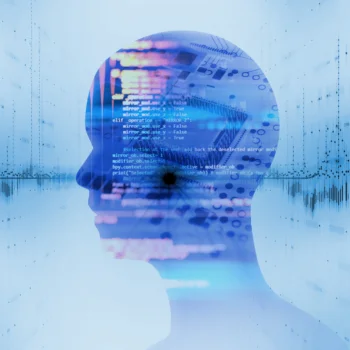Empowering Development: The AI revolution in the Tech industry
In an era where the pace of technological innovation relentlessly accelerates, the tech industry constantly seeks transformative solutions to enhance efficiency, drive innovation, and maintain competitive edges. Among the latest advancements, the integration of Artificial Intelligence (AI) into the development process represents a pivotal shift in how tech companies approach software creation and maintenance. A notable exploration into this integration is Softensity’s experiment on “AI for or instead of developers,” focusing on the practicality and implications of utilizing ChatGPT as an auxiliary tool for developers.
Goals and Methodology: A Dual Perspective
Softensity embarked on a Proof of Concept (PoC) to meticulously evaluate AI’s role in the daily routines of developers. The primary objectives were twofold: to assess whether AI can augment developers’ capabilities and to discern if its integration represents a beneficial enhancement or a potential risk to the traditional development workflow. The methodology centered around a controlled comparison, employing the same project requirements and work sequence, both with and without the assistance of AI, thereby ensuring a balanced and objective analysis.
Interaction dynamics with ChatGPT
The exploration identified three distinct interaction strategies with ChatGPT: posing high-level questions, detailed inquiries, and requesting specific programming recipes. Each approach revealed unique advantages and limitations, ranging from the risk of detail loss to potential context confusion, highlighting the importance of tailoring communication styles to maximize AI’s utility.
The Dichotomy of AI Assistance: Pros and Cons
ChatGPT emerged as a versatile assistant, adept at offering coding examples, architectural advice, and pattern implementations. However, it’s not without its flaws. Issues such as truncated responses, context loss across multiple queries, and sporadic inaccuracies, alongside limitations in functionalities like GitHub integration, delineated the boundaries of AI’s current capabilities.
Efficiency and Quality Metrics: A comparative analysis
The PoC yielded insightful metrics, demonstrating notable time savings and efficiency improvements in various tasks when AI was utilized. Nonetheless, certain activities, including complex architecture development and advanced Excel document generation, experienced a deceleration, suggesting areas where human expertise remains paramount. The qualitative assessment further indicated that the quality of code produced with ChatGPT’s assistance is comparable to that crafted by experienced developers, underscoring AI’s potential as a reliable development partner.
Navigating the AI Landscape: Recommendations for Optimal Integration
To harness ChatGPT’s full potential, Softensity recommends adopting effective communication strategies. These include seeking clear explanations, crafting regular expressions, managing exceptions, and generating migrations, among others. Such practices are instrumental in mitigating the cons while amplifying the pros of integrating AI into development processes.
Conclusion: The Future of development augmented by AI
The incorporation of AI, exemplified by ChatGPT, into the development ecosystem heralds a transformative era for the tech industry. While challenges remain, the benefits of AI-assisted development—ranging from efficiency gains to quality maintenance—are undeniable. For C-level executives in the tech sector, the message is clear: embracing AI as a complementary tool for developers not only enhances productivity but also fosters innovation, securing a competitive advantage in the rapidly evolving technological landscape.
As the industry moves forward, companies like Softensity are at the forefront, not only by leveraging AI’s capabilities but also by guiding others through the complexities of AI integration. This exploration into AI-assisted development is more than just a case study; it’s a blueprint for the future of technological advancement, promising a new horizon where human creativity and AI efficiency converge to redefine what’s possible.
